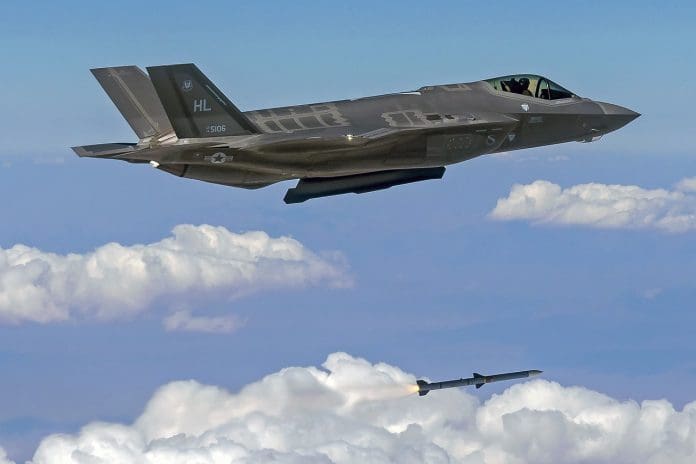This post is also available in:
 עברית (Hebrew)
עברית (Hebrew)
New air-to-air missiles by the name of AIM-174B were deployed by the US Navy in the Indo-Pacific region. The AIM-174B, like other AMRAAM (Advanced Medium-Range Air-to-Air Missile) variants, plays a crucial role in modern air combat by providing fighter jets with enhanced capabilities to neutralize aerial threats from considerable distances, as far as 400 km away.
The AIM-174B, which is an advanced version of the AIM-120 AMRAAM, and the airborne version of the SM-6 missile, is the longest-range weapon the U.S. has ever placed in the Indo-Pacific region. In fact, the AIM-120 only has a range of about 150 km, making it necessary for the aircraft to get much closer in order to strike its target. The AIM-174B was revealed first in July during the largest international naval exercise.
The missile, which is compatible with Australian fighter jets, likely indicates American preparations for tensions in the area. the AIM-174B provides a significant defensive and offensive advantage to the U.S., allowing U.S. aircrafts to engage enemy targets from longer ranges and keeps Chinese aircrafts, particularly those targeting U.S. aircraft carriers, out of effective firing range. Additionally, the AIM-174B can pose a threat to Chinese aircraft that might be used to attack Taiwan, making such operations riskier for China. This can possibly make U.S. involvement in a major conflict more likely, according to Chieh Chung, a researcher at a Taipei-based thinktank, the Association of Strategic Foresight, as reported by Reuters.
The new U.S. missile exceeds the range of China’s PL-15 missile, which can destroy targets up to 185 km away. Developed by the China Air-to-Air Missile Research Institute, the PL-15 replaces the PL-12, a medium-range air-to-air missile with a maximum range of nearly 100 km. The PL-15 features an enhanced active radar detection range and an advanced anti-jamming data link, which are crucial for engaging long-range targets effectively.


























